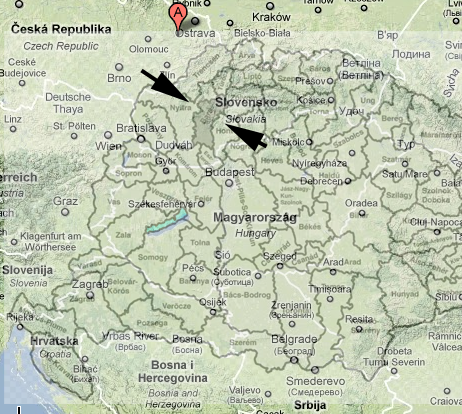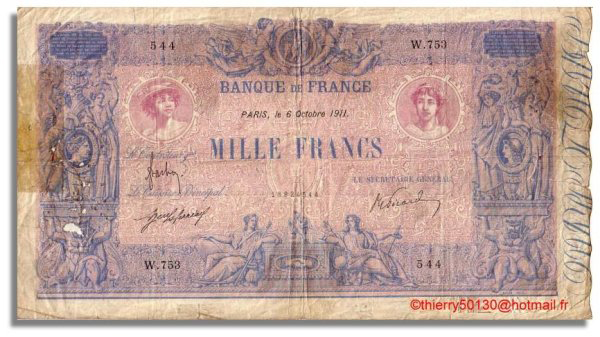The notes of Dr. Eugene Mankovich tell the story of Rev. Antal Mankovits (1815-1890) who, at age 34, organized the local peasants in early 1849 to go to the nearby battle of Branyisko during the Kossuth war. This became a great victory for the Hungarians against vastly superior Austrian forces. Rev. Mankovits never made it to the battle – he was captured by Russian troops moving in from the North to aid the Austrian forces (~February 4). He was chained to a wagon and forced to run 5 miles to the Russian camp where he was beaten and starved for 2 days before being released.
The battle was led by Hungarian Colonel Richard Guyon (an Irishman by birth) who came to his leadership because of:
The political events of 1848 drew him from retirement, and he united with the struggle for independence in his adopted country. In the first battle which the Hungarians fought before Schewchat, October 28, 1848, major Guyon distinguished himself greatly in the storming of the entrenchments. With equal valor, he defended for an entire day, the open town of Tyrnau, but with 1800 men, against an Austrian force of 10,000 men, under General Simunich. For his gallantry in these actions he was promoted to a colonelcy; and on the 5th of February he took Branyisko by storm, one of the most brilliant victories of the Hungarian war.
From: The Turkish Empire; Its Historical, Statistical, and Religious Condition: Also Its Manners, Customs, by Alfred de Bessé, Published by Lindsay Blakiston, 1854. Original from Harvard University. Digitized Dec 19, 2005. 202 pages. P 28 Biography of Churschid Pasha (Count Richard Guyon), Turkish Commander-in-Chief of Asia Minor – this book contains some colorful accounts of the battle and the bravery of Colonel Guyon who operated in 1959 under command of General Gorgey. Guyon led an extraordinary military life apparently finishing his career working for the Ottoman Empire.
Braniyszko (Branisko) Pass [49° 1’1.50 N, 20°51’24.78 E] (click here to see a map)
The Branyisko (Braniyszko, Branisko) Pass is 15 miles SSE of Šambron and 17 miles W of Prešov. The battle was carried out on the western side of the pass after engaging the enemy at Iglo (today Spišská Nová Ves) on February 2.
The text below is from Google Earth (November 8, 2008 by njm)
Guyon de Geis General Richard Debaufre De Guyon.
Gorgey, who had turned a deaf ear to every appeal for co-operation made by..Colonel Guyon, had meantime kept himself “suspiciously” to the Gallician frontier, cut off from the open country by the army of Windischgratz; advancing to the Theiss, the sacred river of the Hungarian, he found his passage on the great Gallician road, barred by Schlick, at the Branyizko pass, at the head of 25,000 soldiers, which it was supposed 100,000 could not dislodge; a feat, nevertheless, reserved for Guyon to perform, with a mere tithe of that number. Gorgey avoiding pass and men, possibly by another “flank manoeuvre” borrowed from Jellachich’s lexicon of strategy, left his subordinate the way to clear. Guyon advancing, therefore, towards the comity of Saros, found that Schlick (the most daring and talented of all the Austrian commanders) had already occupied the defiles and tremendous heights of Branyiszko. It was on this great occasion Guyon secured for himself a name, that will for ever live in the annals of great deeds, proving himself a worthy descendant of his gallant ancestor, who won his laurels when fighting under the banners of the illustrious Schomberg.
Now let us see how the strong man used his strength, and how British valour conquered apparent impossibilities. On the 5th of February, 1849, Guyon, and his brave Magyars, not 10,000 in number, stood in the valley; while 25,000 picked imperialists waited in watchfulness for the moment which was to behold the calculated extermination of the audacious insurgents that he led. To understand fully the difficulty of the attempt, the reader will bear in mind, that the position to be stormed, was the acclivity of a steep mountain, with every path and defile guarded by masses of bayonets, and by many a sullen cannon-mouth ready to disgorge its charge. This difficulty was rendered the more insuperable by recent frosts, which had covered almost every mountain path with a coating of ice. The snow lay on the ground, and. it was a severe winter’s night, when a part of the troops, being ordered to disencumber themselves of their arms, climbed the narrow footpaths on their hands and- knees between the rocks, carrying the cannons, which were taken to pieces, so as to enable each man to bear his burden, with ammunition, ropes, etc.
It was one in the morning before they reached the heights commanding the defiles, and their companions, meanwhile, engaged the Austrians in feigned attacks, and prevented their suspecting the movement. Before the storming was finally determined upon, and while many, feeling neither their leader’s responsibility, nor partaking in his stupendous hope, seemed willing to decline the attempt, it is asserted, by more than one witness, that Guyon rode up to some lagging officers, and cried out in German: “Before the colours gentle men, if so, the men will follow; if not, there is grape shot for you,” and he indicated with his loaded pistols, one of which he held in either hand, the spot where cannon charged with grape shot had been drawn up by his orders behind the infantry, and where each gunner stood with blazing match behind his gun, ready to pour their contents upon the craven. The soldiers, with a wild shout, sprang on their way, and at length reached the enemy. The contest was furious, but decisive, and the Austrians were driven in disorder, and with great slaughter, over the main ridge. Prisoners, arms, ammunition, and the impedimenta of the camp, were taken by the conquerors to an embarrassing amount, and a passage was thus opened for Gorgey, who, for unexplained reasons, permitted Schlick to carry off, at his leisure, the remainder of the army that had- thus fallen, through Guyon’s conquest, into his hands. While the Hungarian diet decreed that Guyon’s name should be inscribed upon a bronze pillar, in commemoration of a battle, that may be fairly put in comparison with the immortal victory of the Alma, Gorgey reaped the whole credit of the success, and had, afterwards, the bad taste to make so important an action the theme of coarse jokes at his tent and at his table.. (6) This gallant feat of arms, “says an eye witness” not only saved the Hungarian army, but, by crowning the victories of Klapka, secured the sect of government, and drove the Austrians from the north of Hungary (see also Page 306 – 307 of the Hungarian Revolution Edited by Gabor Bona).
The victory of Branyiszko was the first tidings of the army of Gorgey which had reached the diet for a considerable time, and when it was stated that his troops in pursuit of Schlick, who was expected to join Windischgratz, had reached Kaschau, the joy was unbounded. When it subsequently appeared that Gorgey was not in the battle, and that the merit solely belonged to Guyon, a vote of thanks was passed to that brave officer, and it was decreed a marble column should be erected, on which his name should be inscribed, in bronze. No suspicion was, however, at that time breathed of Gorgey’s conduct.


